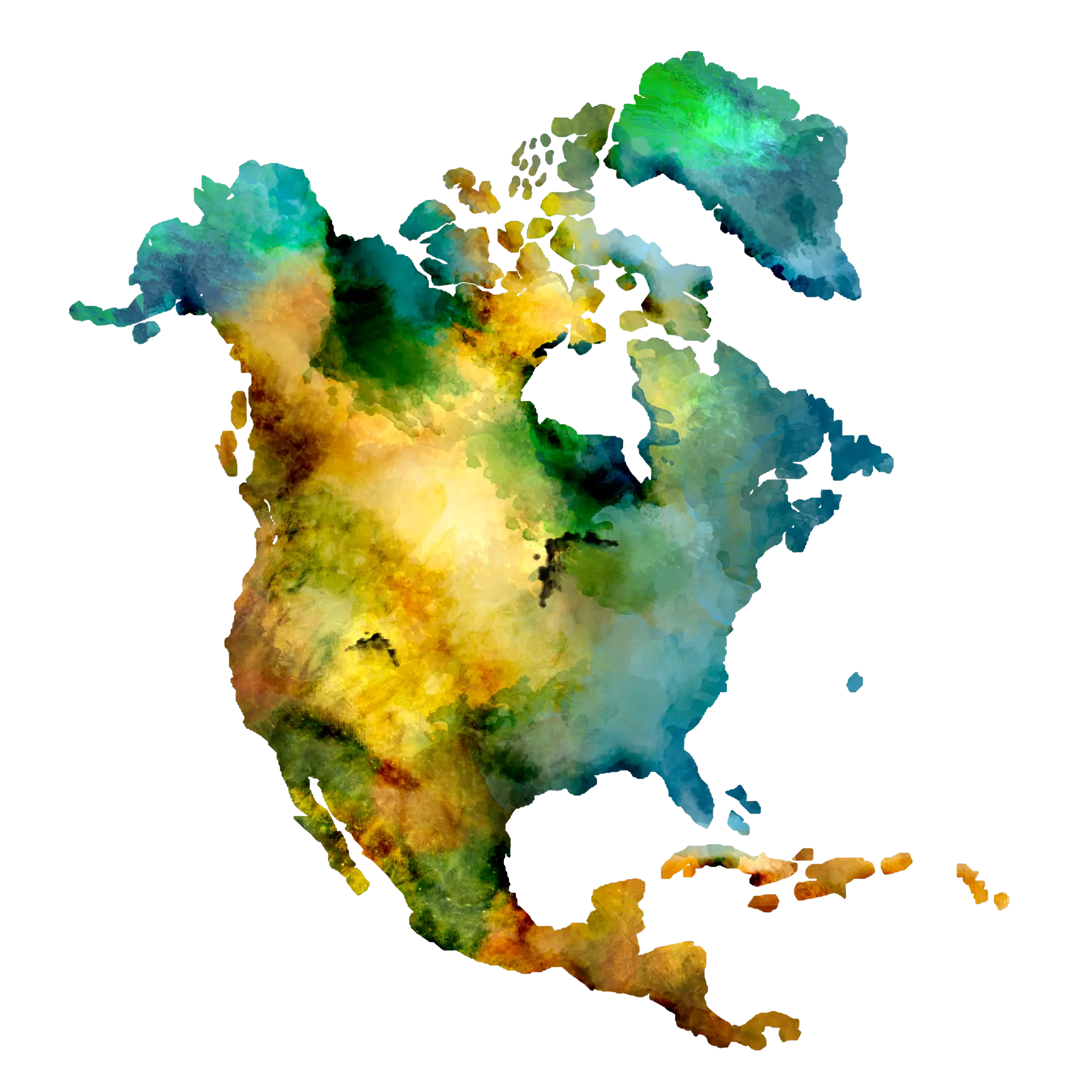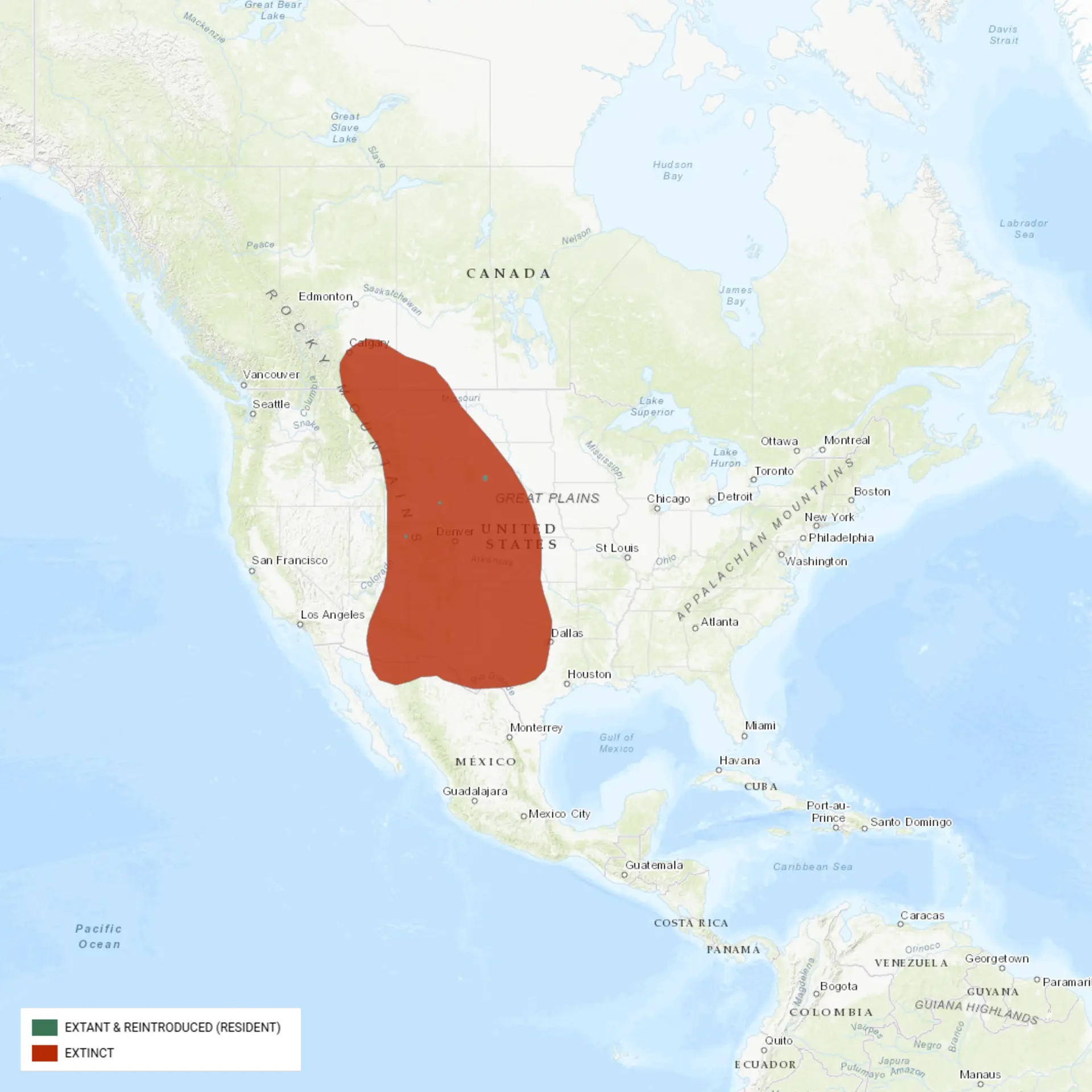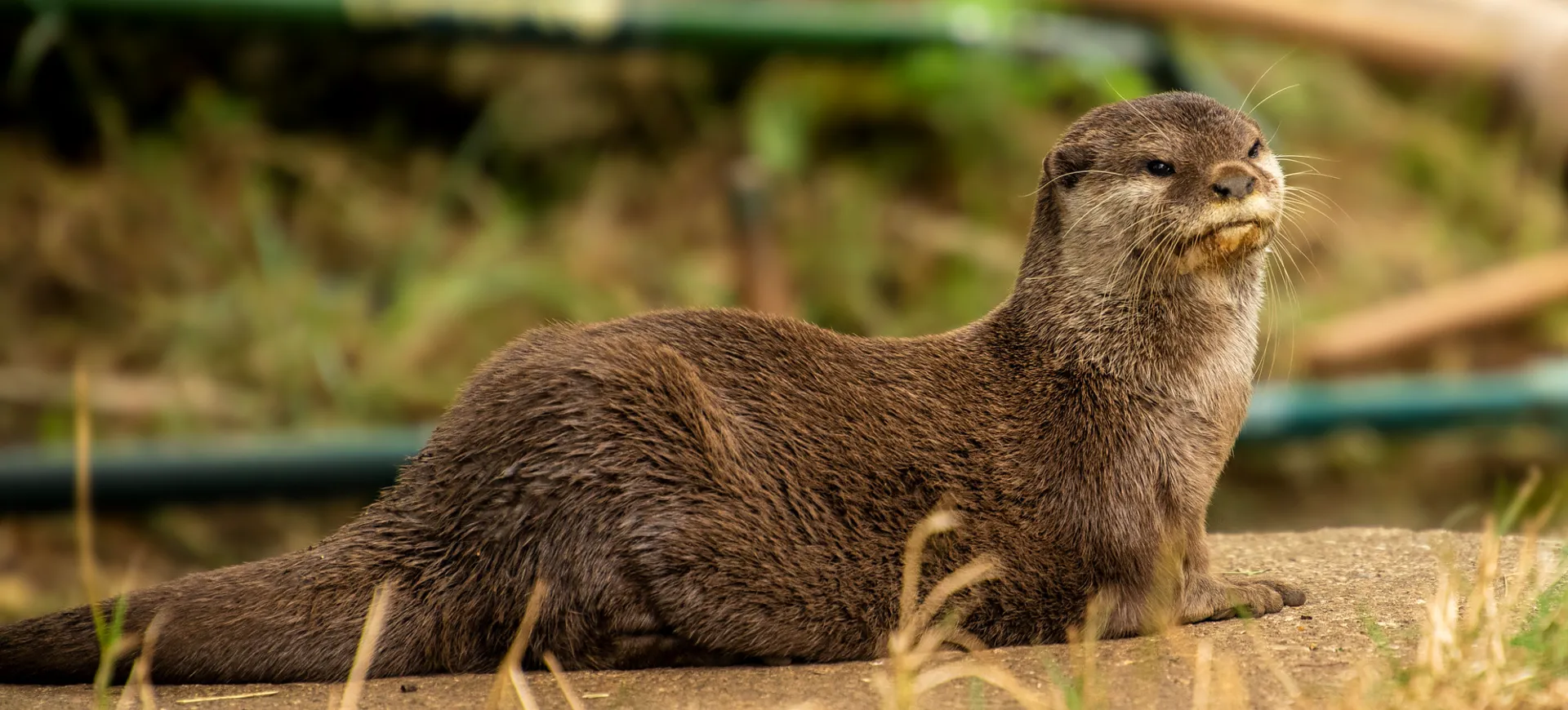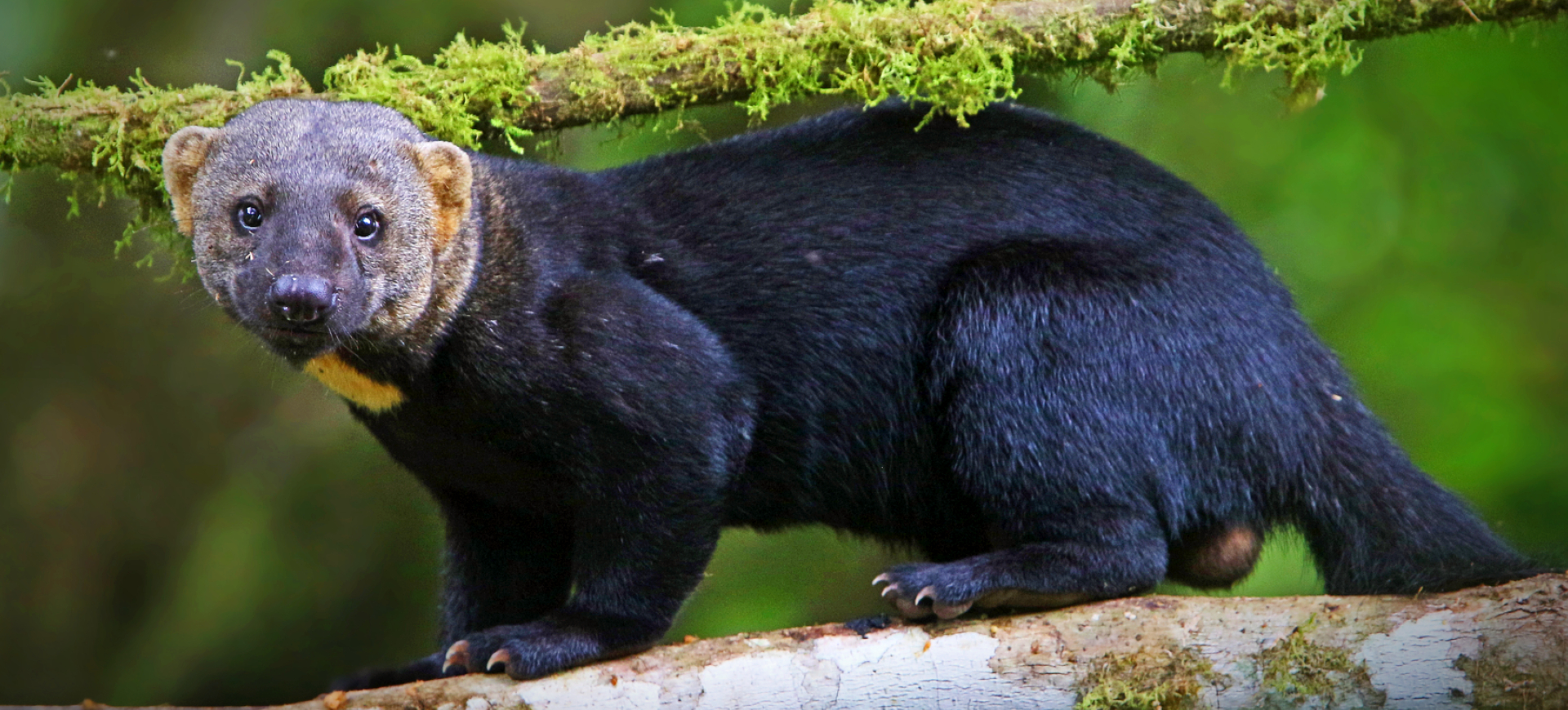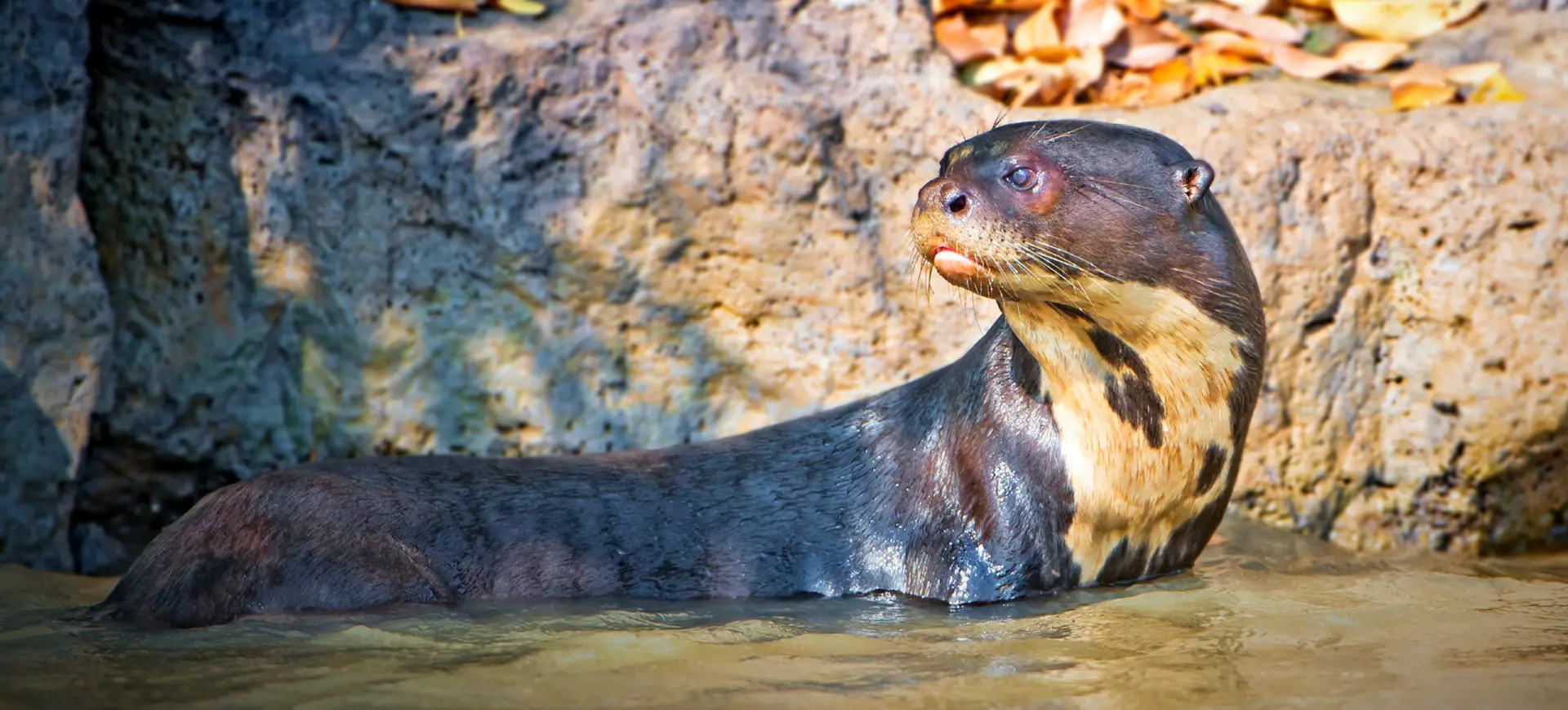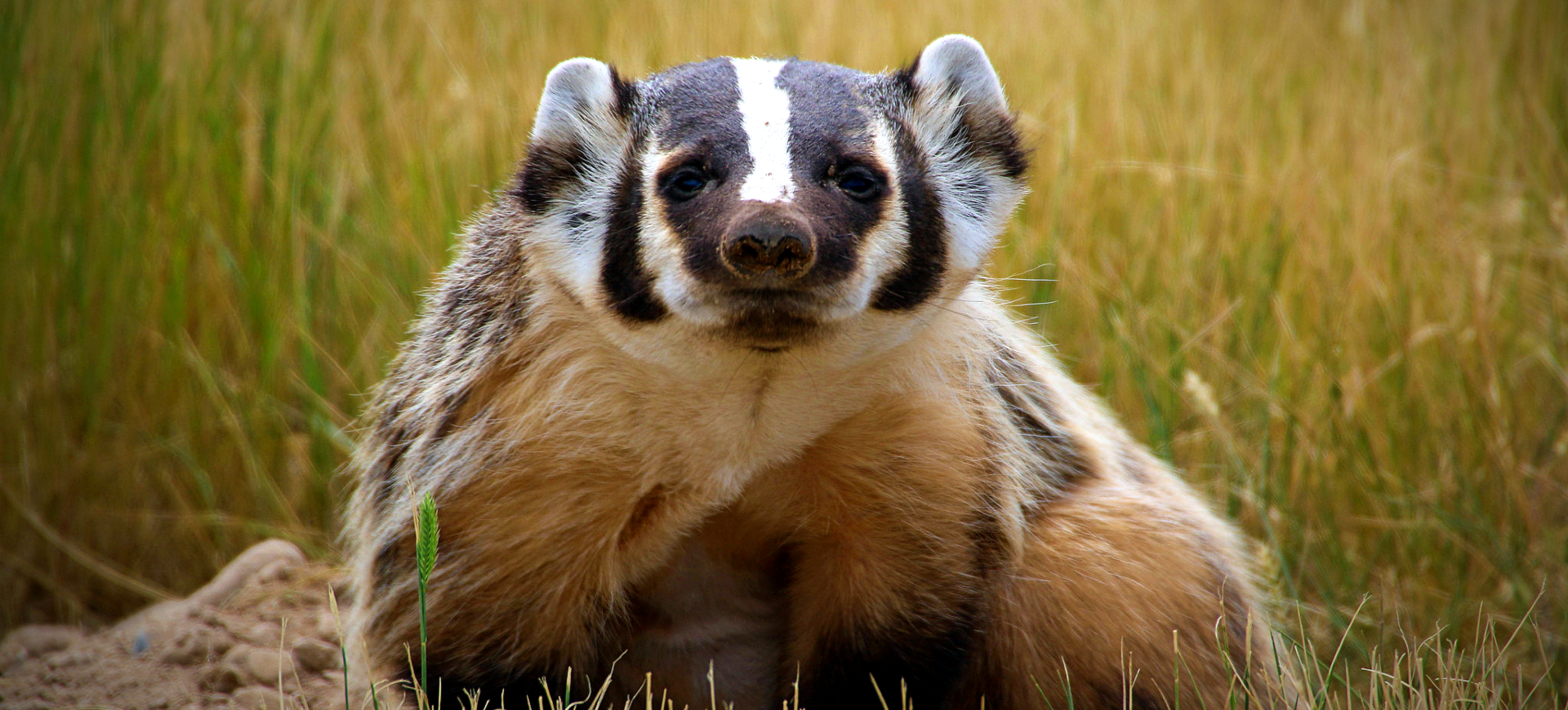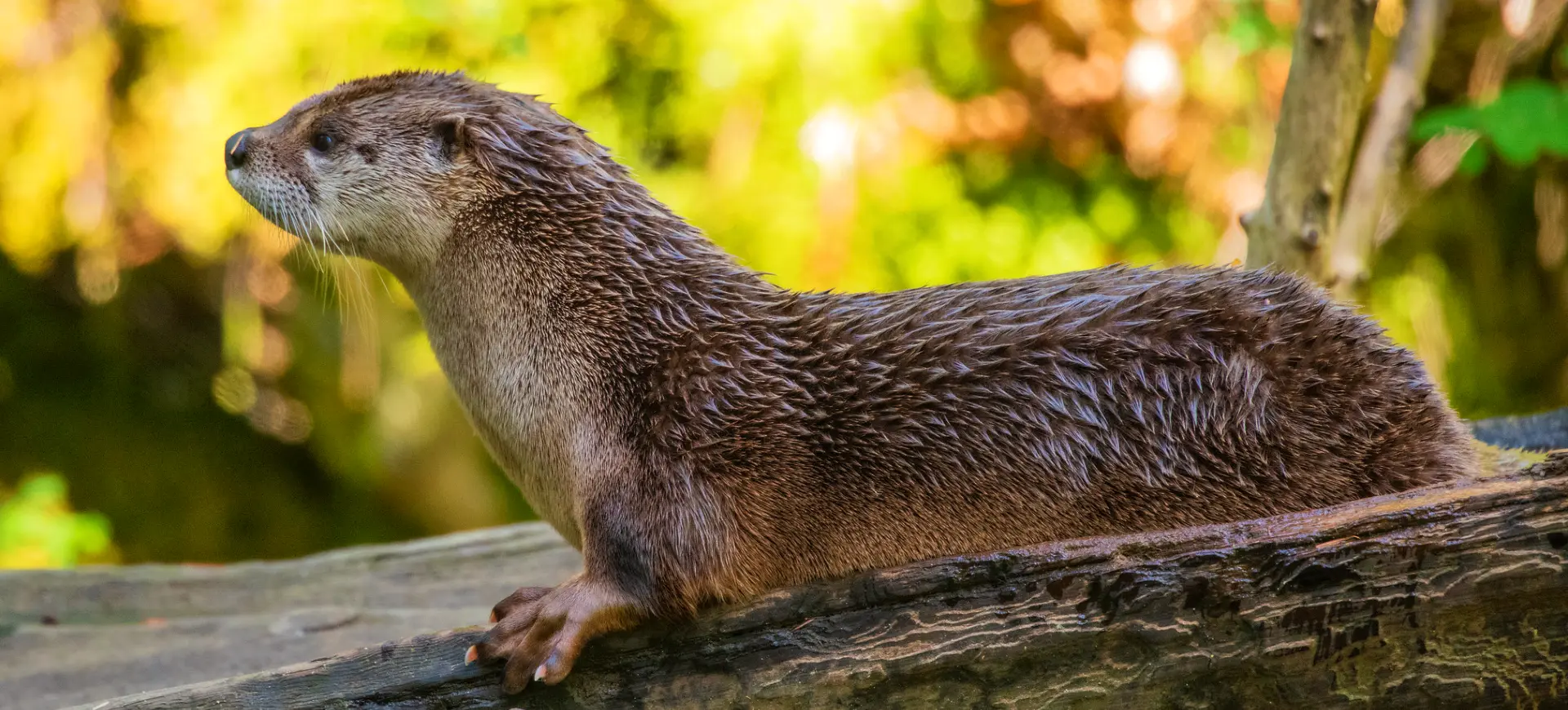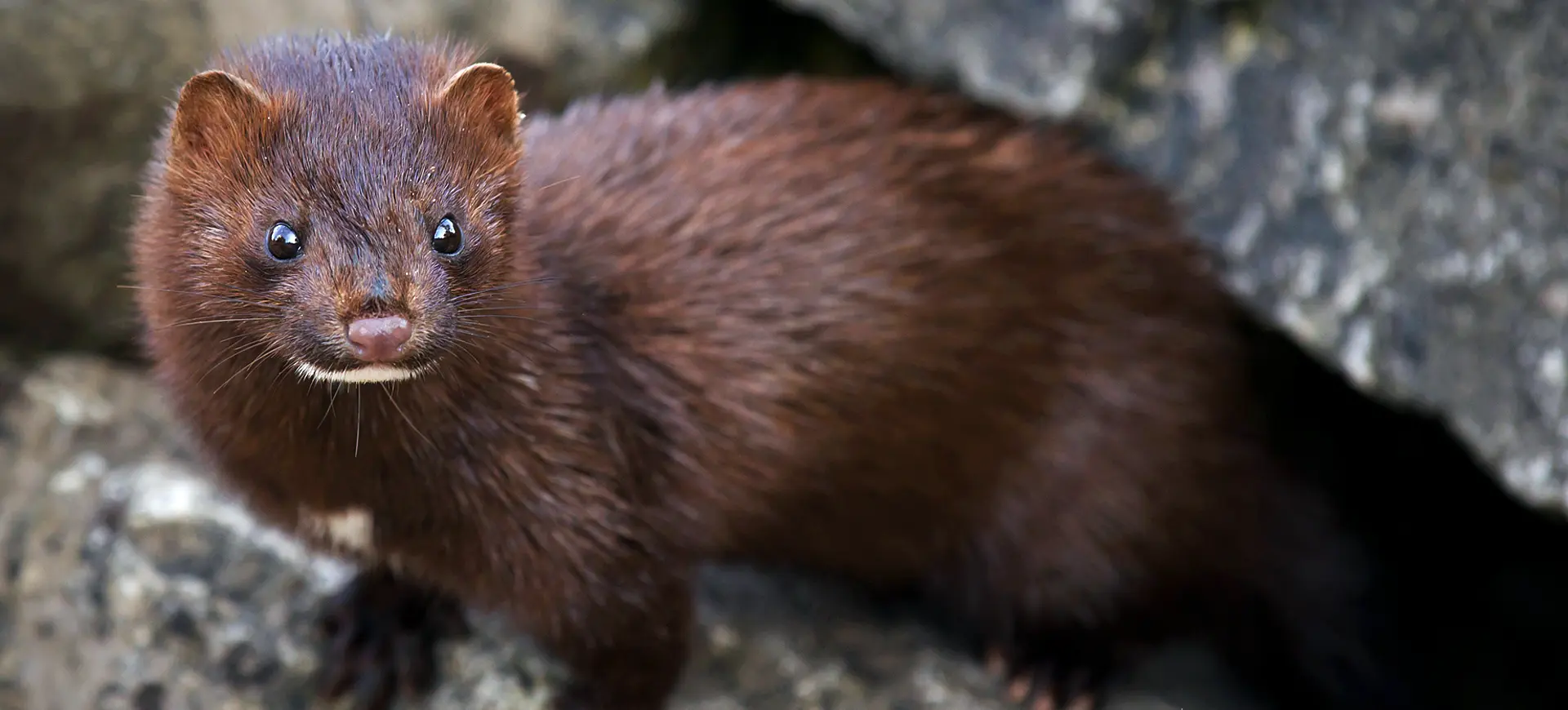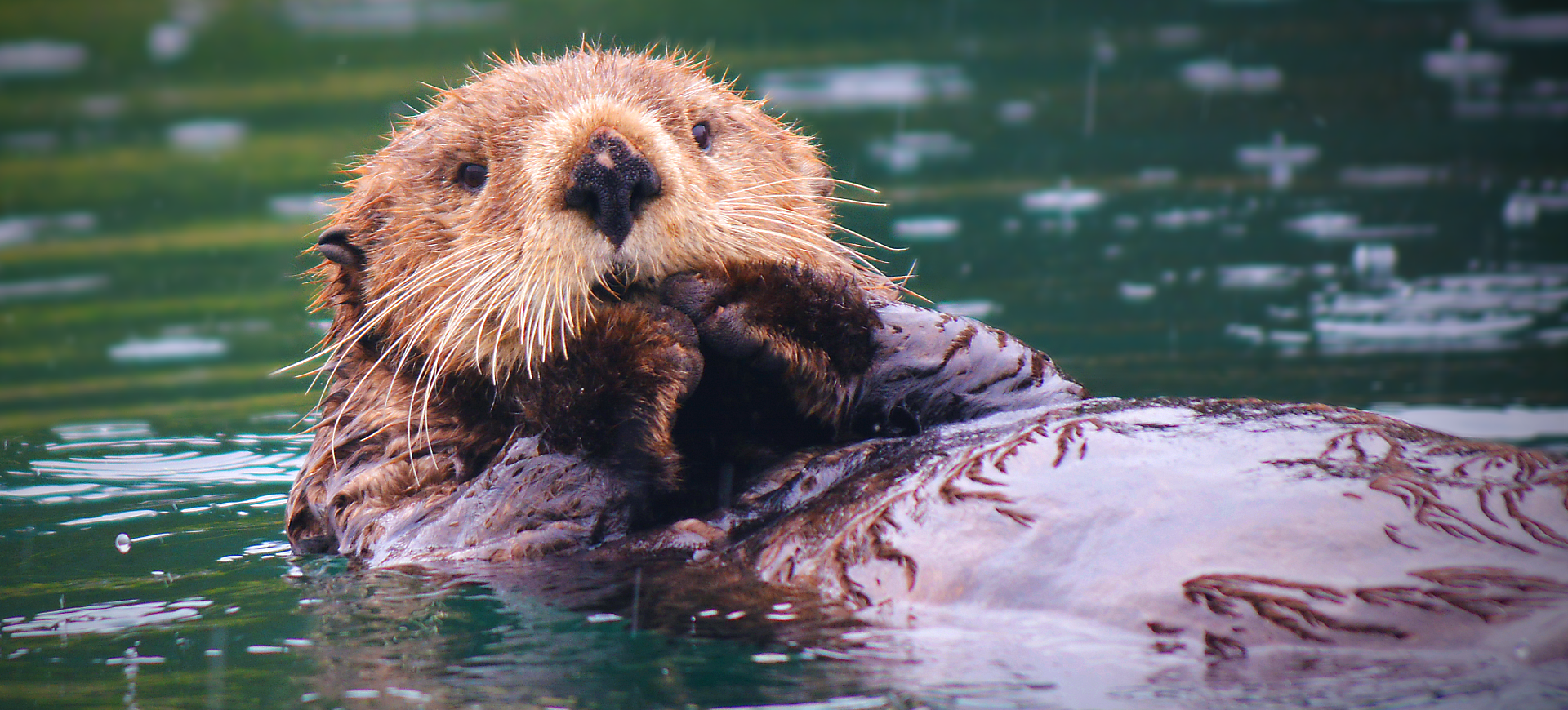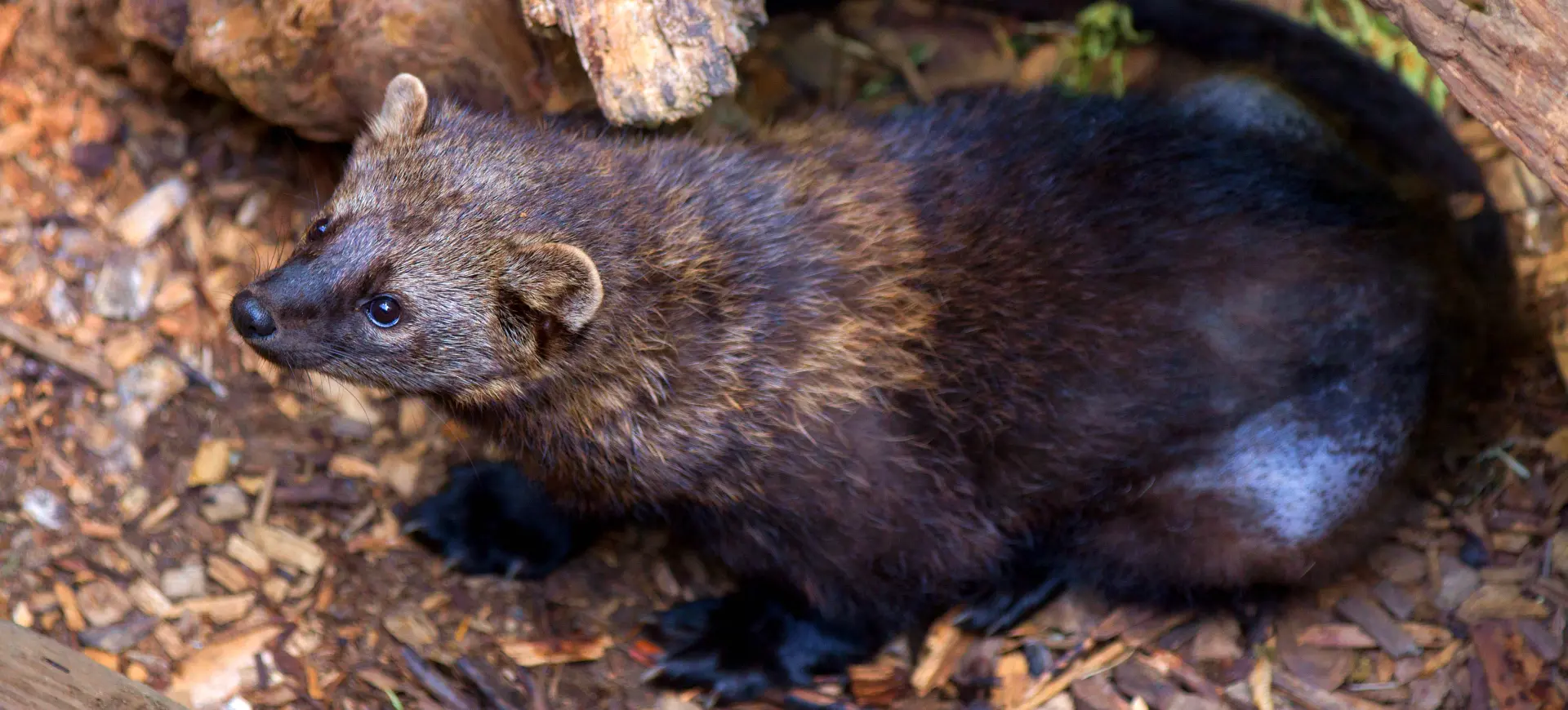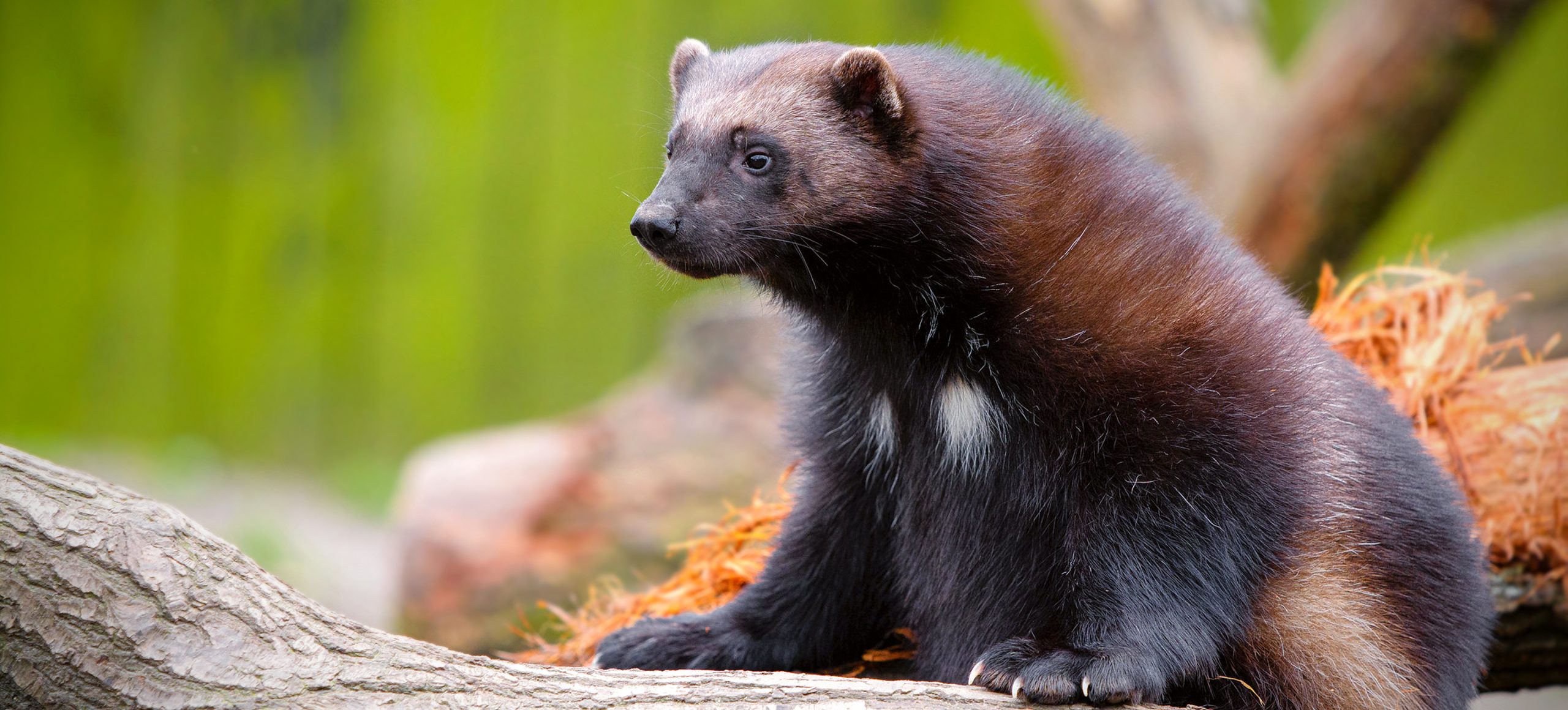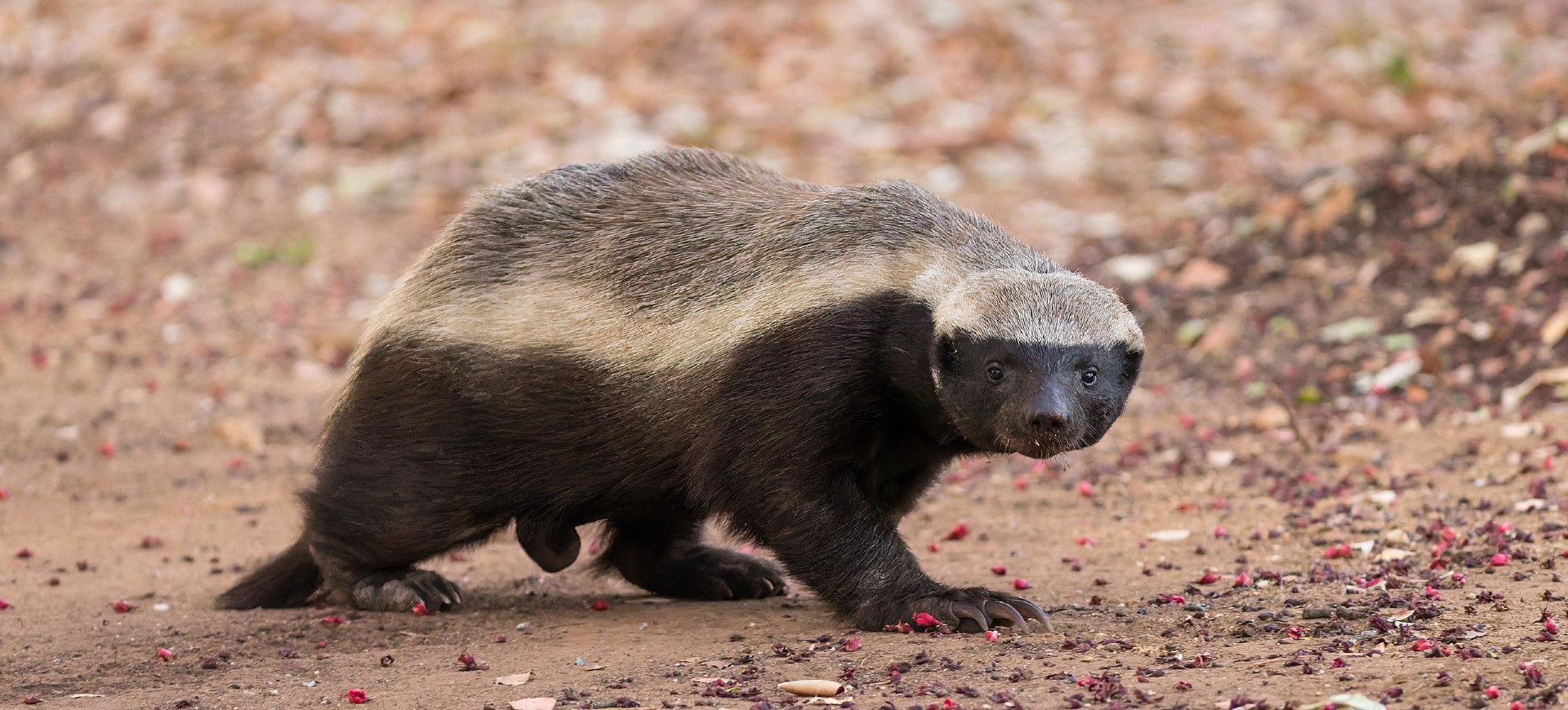Overview
The Black-footed Ferret (Mustela nigripes), once considered extinct in the wild, is a small carnivorous mammal native to North America and a testament to successful conservation efforts. Characterized by its slender body, black markings on the feet, legs, and tail tip, and a distinctive black mask across the eyes, this species is highly specialized in its habitat and diet. It predominantly resides in prairie dog colonies, relying almost exclusively on prairie dogs for food and occupying their burrows for shelter. Black-footed Ferrets are nocturnal, spending most of the day underground and emerging at night to hunt.
The species’ historical range extended across the Great Plains, from Canada to Mexico, encompassing the vast grasslands that once dominated the landscape. The drastic reduction of prairie dog populations due to habitat loss, disease, and extermination campaigns led to a severe decline in Black-footed Ferret numbers. By the 1970s, the species was feared extinct until a small population was discovered in Wyoming in 1981, sparking conservation and reintroduction efforts aimed at their recovery.
Conservation programs for the Black-footed Ferret involve captive breeding, vaccination against disease, and reintroduction into protected habitats. These efforts have gradually increased their numbers, but the species remains one of the most endangered in North America. The Black-footed Ferret’s survival is closely linked to the conservation of prairie dog ecosystems, highlighting the interconnectedness of species and the importance of holistic environmental preservation strategies.
Taxonomy
Kingdom
Phylum
Class
Order
Family
Genus
Species
Type
Current distribution:
Following intensive conservation and reintroduction efforts, Black-footed Ferrets have been reintroduced to several locations across their historic range, including Montana, South Dakota, Wyoming, Arizona, Colorado, Utah, Kansas, and Mexico. These reintroduced populations are monitored and managed to encourage growth and stability, with ongoing efforts to identify additional suitable habitats for future reintroductions.
Despite these successes, the Black-footed Ferret remains one of North America's most endangered mammals. The species' recovery is hindered by ongoing threats to prairie dog populations and their habitats, underscoring the need for continued conservation action. The current wild population is estimated to be several hundred individuals, reflecting significant progress from the brink of extinction but highlighting the continued vulnerability of the species.
Physical Description:
Black-footed Ferrets are slender, with a body length of about 18 to 24 inches (45 to 61 cm) and a tail adding another 4 to 6 inches (10 to 15 cm). They typically weigh between 1.5 to 2.5 pounds (0.7 to 1.1 kg), with males slightly larger than females. Their coat is primarily yellowish-buff, with distinctive dark brown to black markings on the feet, legs, tail tip, and a “mask” on the face. These features provide camouflage in their prairie dog colony habitats and contribute to their unique appearance among North American mammals.
The Black-footed Ferret’s long body is adapted for navigating the narrow tunnels of prairie dog burrows, allowing them to chase down their prey with agility and precision. Their sharp, pointed teeth and strong jaw muscles are perfectly suited for a carnivorous diet, primarily consisting of prairie dogs. The physical characteristics of Black-footed Ferrets, including their large front paws and claws, are specialized for digging and excavating, further emphasizing their adaptation to a life closely intertwined with prairie dog colonies.

Lifespan: Wild: ~3 Years || Captivity: ~6 Years

Weight: Male: 1.5-2.5 lbs (0.7-1.1 kg) || Female: 1.5-2 lbs (0.7-0.9 kg)

Length: Male & Female: 18-24 in (45-61 cm)

Top Speed: 15 mph (24 km/h)
Characteristic:
Native Habitat:
Black-footed Ferrets are native to the grasslands of North America, with their habitat historically spanning the Great Plains from southern Canada to northern Mexico. These areas, characterized by vast expanses of prairie and grassland, provide the open landscapes necessary for prairie dog colonies to thrive. The symbiotic relationship between Black-footed Ferrets and prairie dogs is evident in their shared use of the grassland ecosystem, with ferrets depending on prairie dog burrows for shelter and breeding sites.
The conversion of grasslands to agricultural use, urban development, and the systematic reduction of prairie dog populations have dramatically restricted the habitat available for Black-footed Ferrets. Conservation efforts now focus on identifying and restoring suitable grassland habitats that can support both prairie dogs and ferrets, ensuring the availability of essential resources like food and shelter for the ferrets’ survival and reproduction.
Climate Zones:
Biomes:
WWF Biomes:
Biogeographical Realms:
Continents:
Countries:
Diet:
Diet & Feeding Habits:
The Black-footed Ferret is a specialized carnivore with a diet almost exclusively comprised of prairie dogs, constituting up to 90% of its food intake. This dietary specialization reflects the ferret’s evolutionary adaptation to life in prairie dog colonies, utilizing the burrows for shelter and the inhabitants for sustenance. Black-footed Ferrets are adept hunters, capable of pursuing prairie dogs through underground tunnels and killing them with a precise bite to the neck.
Their nocturnal feeding habits align with the nighttime activity patterns of prairie dogs and help them avoid daytime predators. The ferret’s reliance on a single prey species makes it particularly vulnerable to fluctuations in prairie dog populations due to disease, habitat loss, or extermination efforts. Conservation of Black-footed Ferrets, therefore, requires parallel efforts to conserve and manage healthy prairie dog populations and their grassland habitats.
Mating Behavior:
Mating Description:
Black-footed Ferrets have a polygynous mating system, with males competing for access to multiple females during the breeding season, from March to April. Males may travel extensively searching for receptive females, and successful males can mate with several females in a single season. Gestation lasts approximately 42 days, resulting in litters of one to six kits, averaging three to four.
Kits are born blind and helpless in the seclusion of a prairie dog burrow, relying entirely on their mother for nourishment and protection. They remain in the burrow for the first few months of life, emerging in late summer to begin learning hunting and survival skills. The mortality rate for young ferrets is high, with predation, disease, and environmental factors posing significant risks. However, those that survive to adulthood play a crucial role in the ongoing efforts to recover and sustain Black-footed Ferret populations in the wild.
Reproduction Season:
Birth Type:
Pregnancy Duration:
Female Name:
Male Name:
Baby Name:
Social Structure Description:
Black-footed Ferrets are solitary animals, with individuals occupying and defending territories within prairie dog colonies. Their social interactions are primarily limited to the breeding season when males and females come together to mate. Outside this period, ferrets maintain separate territories, which they mark with scent to communicate occupancy and reproductive status to other ferrets.
The solitary nature of Black-footed Ferrets is an adaptation to their specialized hunting and living habits, allowing them to maximize available food resources within their territories. Understanding Black-footed Ferrets’ social structure and territorial behavior is important for conservation efforts, particularly in managing reintroduced populations and ensuring the availability of sufficient habitat to support healthy breeding populations.
Groups:
Conservation Status:
Population Trend:
The Black-footed Ferrets population has gradually increased due to concerted conservation efforts, including captive breeding, disease management, and reintroduction programs. The species was once feared extinct in the wild, with all known individuals brought into captivity in the 1980s to start a breeding program. Since then, hundreds of ferrets have been bred in captivity and reintroduced into the wild across several sites within their historical range.
The success of these reintroduction efforts varies by location, with some populations establishing successfully and others facing challenges such as disease outbreaks or declines in prairie dog populations. Continuous monitoring and management are necessary to ensure the survival and growth of reintroduced populations, with ongoing efforts to address threats and identify new reintroduction sites.
Population Threats:
The primary threats to Black-footed Ferret survival include habitat loss and fragmentation due to agricultural development, urbanization, and oil and gas extraction. Diseases, particularly sylvatic plague and canine distemper, pose significant risks to ferrets and their prairie dog prey. Efforts to eradicate prairie dogs, considered pests by some landowners, directly impact ferret populations by reducing available food and habitat.
Conservation challenges include genetic diversity concerns due to the small founding population of captive-bred individuals and the ongoing need for disease management and vaccination efforts to protect wild populations. Addressing these threats requires a multifaceted approach, including habitat restoration, vaccination programs, and collaboration with landowners and stakeholders to promote coexistence with prairie dogs and ferrets.
Conservation Efforts:
Conservation efforts for the Black-footed Ferret are among the most comprehensive for any North American mammal, involving federal, state, and private partnerships. Key components of these efforts include captive breeding programs, vaccination against disease, habitat restoration, and public education and outreach. Reintroduction sites are carefully selected and managed to provide optimal conditions for ferrets and their prairie dog prey, including measures to control sylvatic plague.
The Black-footed Ferret Recovery Implementation Team, comprising government agencies, conservation organizations, and landowners, coordinates recovery activities across the species’ range. This collaborative approach has been crucial in making strides toward the ferret’s recovery, demonstrating the potential for successful conservation of endangered species through concerted effort and cooperation.
Additional Resources:
Fun Facts
- Black-footed Ferrets are the only ferret species native to North America.
- They have a unique “dance” that involves hopping sideways and backward, thought to be a form of play and possibly a way to entice prey.
- Black-footed Ferrets can consume up to 100 prairie dogs each year.
- They were once considered extinct in the wild until a small population was discovered in 1981.
- The successful recovery of the Black-footed Ferret is considered one of the most remarkable conservation success stories in North America.
- Black-footed Ferrets have an extraordinary ability to hear low-frequency sounds, helping them detect prey underground.
- Ferrets play a crucial role in maintaining the ecological balance of prairie ecosystems.
- Conservation efforts for the Black-footed Ferret have led to the development of innovative conservation techniques, including using drones to distribute vaccine-laden treats to protect prairie dog populations from the sylvatic plague.
- The Endangered Species Act has facilitated the species’ recovery, highlighting the importance of legislative support for wildlife conservation.
- Despite their name, Black-footed Ferrets spend most of their time underground, using prairie dog burrows for shelter and breeding.

